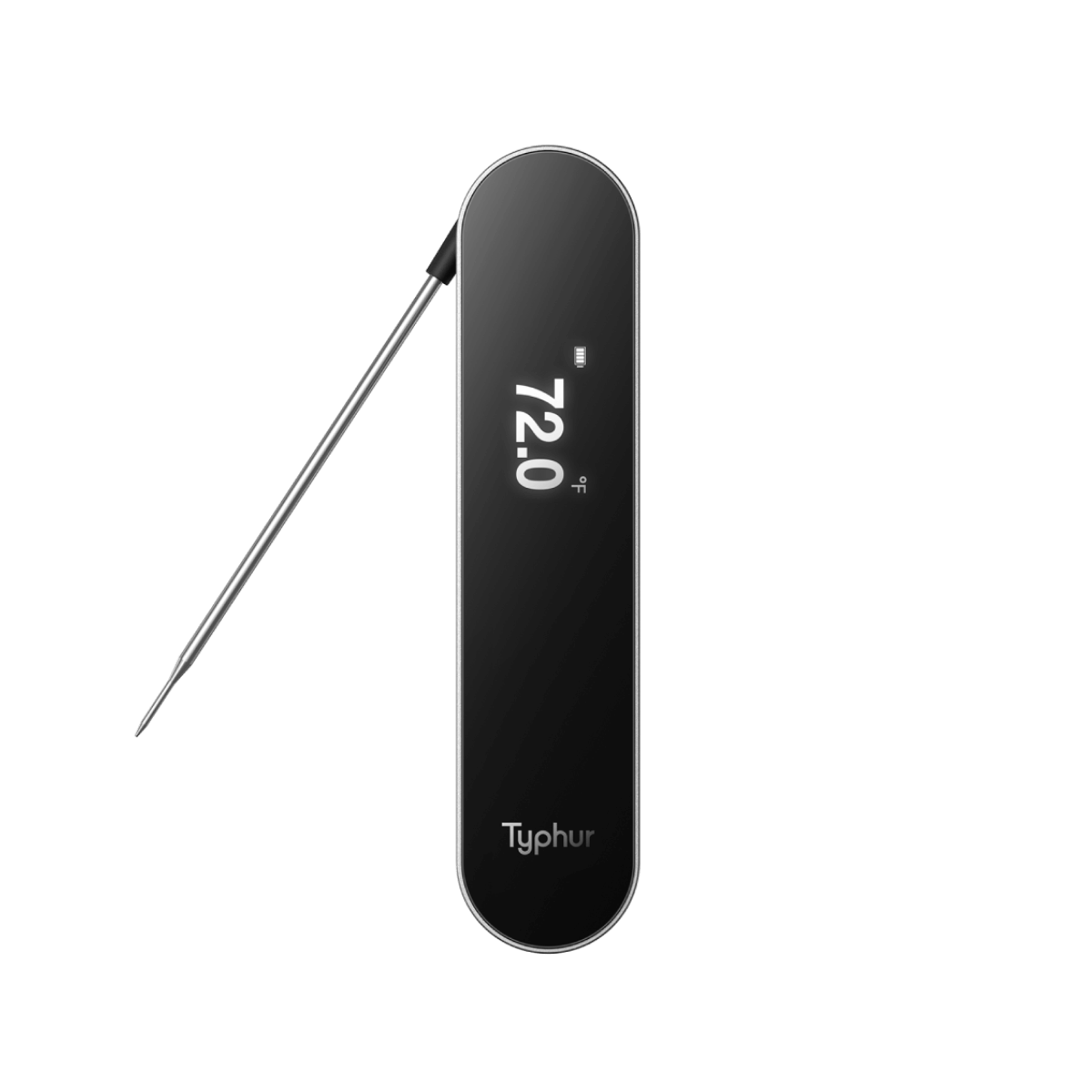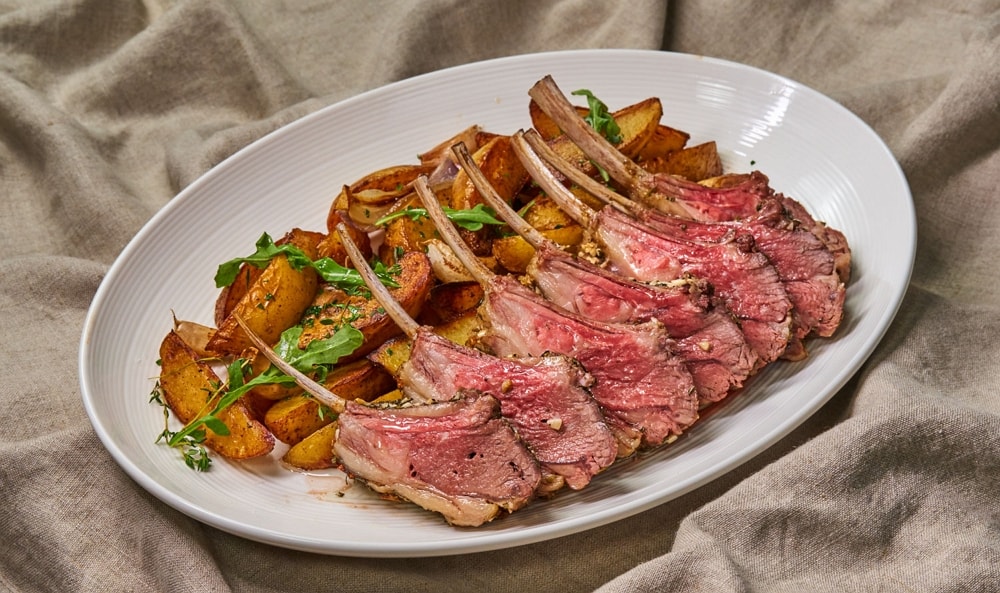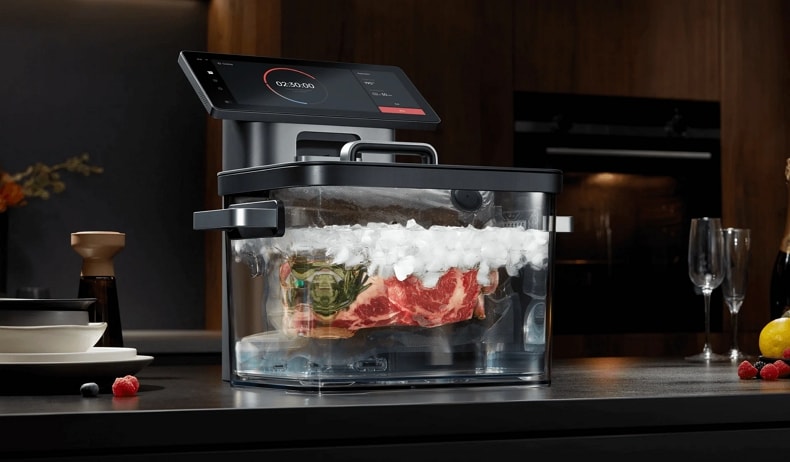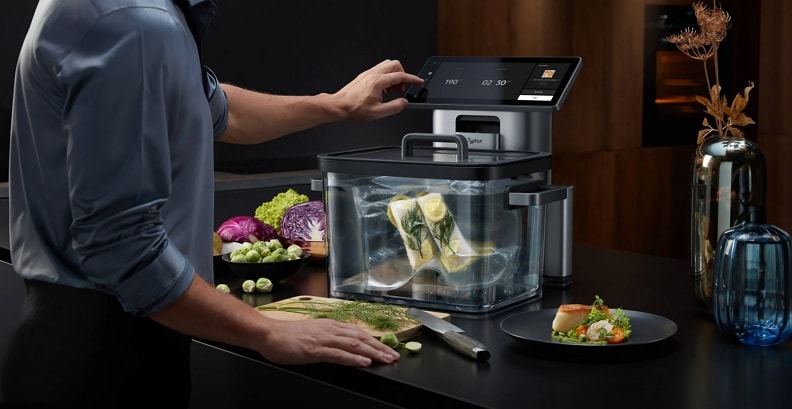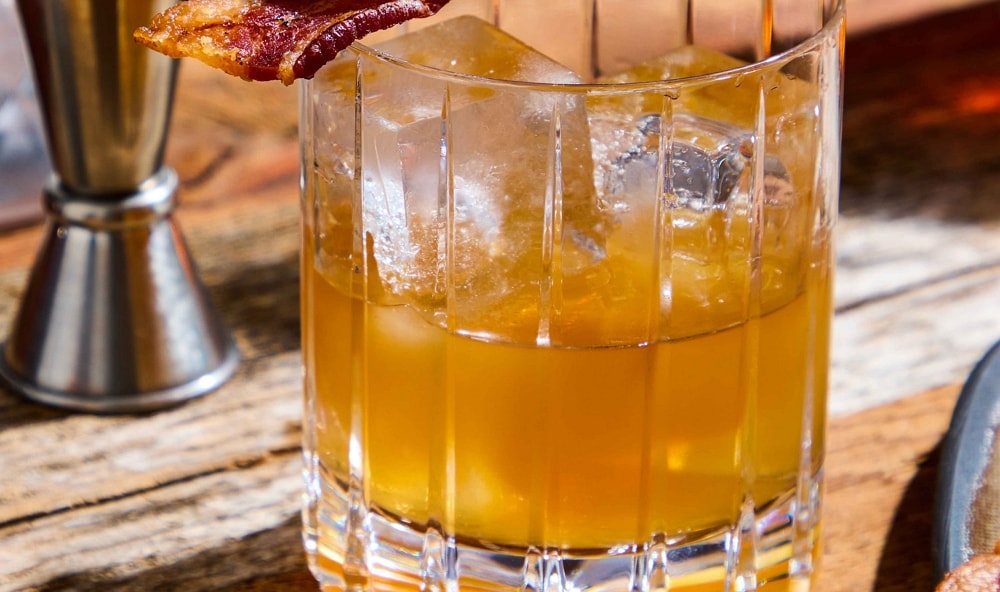Sous vide cooking is a modern cooking technique that produces amazing flavors and consistent results for a variety of ingredients and dishes. But how safe is this cooking method?
Let’s delve deeper into what sous vide cooking is and how it ensures food safety.
What is Sous Vide Cooking?
Known for delivering restaurant-quality results, sous vide cooking has been in professional kitchens for decades. Over the years the tools and methods have been popularized, allowing people to use sous vide cooking to prepare their own home-cooked meals. The process is fairly simple and foolproof.
The first step of sous vide cooking is to attach a sous vide precision cooker or immersion circulator to a pot or heat-proof container filled with water. The precision cooker or immersion circulator includes a heating element. Depending on the ingredients and desired doneness, you can set the exact cooking time and temperature. However, have you ever wondered how long you can hold food in the sous vide? This is an important consideration to ensure safety and quality.
The ingredients are then placed into an air-tight, heat-safe bag and submerged in the temperature-controlled water bath. The water bath will slowly cook the food with minimal supervision needed. Once the timer goes off, your food is ready to enjoy or in some cases, it can be sautéed, seared, grilled, or broiled.
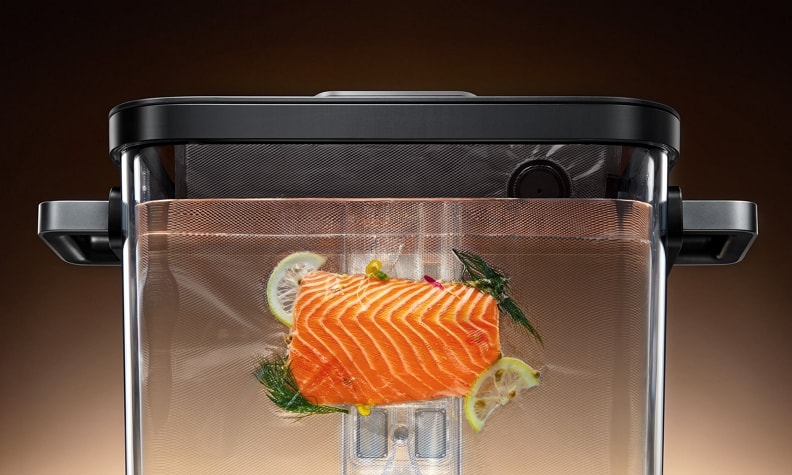
Sous Vide Cooking and Food Safety
This low-temperature, long-time cooking technique actually allows you to serve foods at a slightly lower temperature – lower than the industry standards for food safety – preserving valuable and flavorful juices. However, how can we determine if foods are safe in this method?
Pasteurization
In sous vide cooking, pasteurization is a critical mechanism that ensures food safety. By controlling the cooking temperature and time precisely, sous vide cooking can effectively eliminate potential foodborne pathogens. For cooked products, it is recommended that establishments use Salmonella as an indicator of lethality since the thermal destruction of Salmonella in cooked products is sufficient to destroy most other pathogens [1]. According to FSIS, the performance standards for specific products set required levels of Salmonella lethality during cooking to ensure food safety as follows:
- Cooked poultry products must be processed to achieve at least a 7-log reduction of Salmonella or an alternative lethality;
- Roast, cooked, and corned beef must be processed to achieve at least a 6.5-log reduction of Salmonella or an alternative lethality (e.g., at least a 5-log reduction) ;
- Cooked uncured meat patties must be processed to meet or exceed the time-temperature combinations documented by FSIS [2];
- For cooked meat products, FSIS recommends that establishments achieve a target 6.5-log or 5-log reduction of Salmonella in their process;
Table 1. Time-Temperature Combinations for Meat Products to Achieve a 5-Log Reduction.
Adapted from FSIS [1]. An establishment must ensure both time and temperature parameters are met to use this table to support that its process achieves a 5-log reduction of Salmonella.
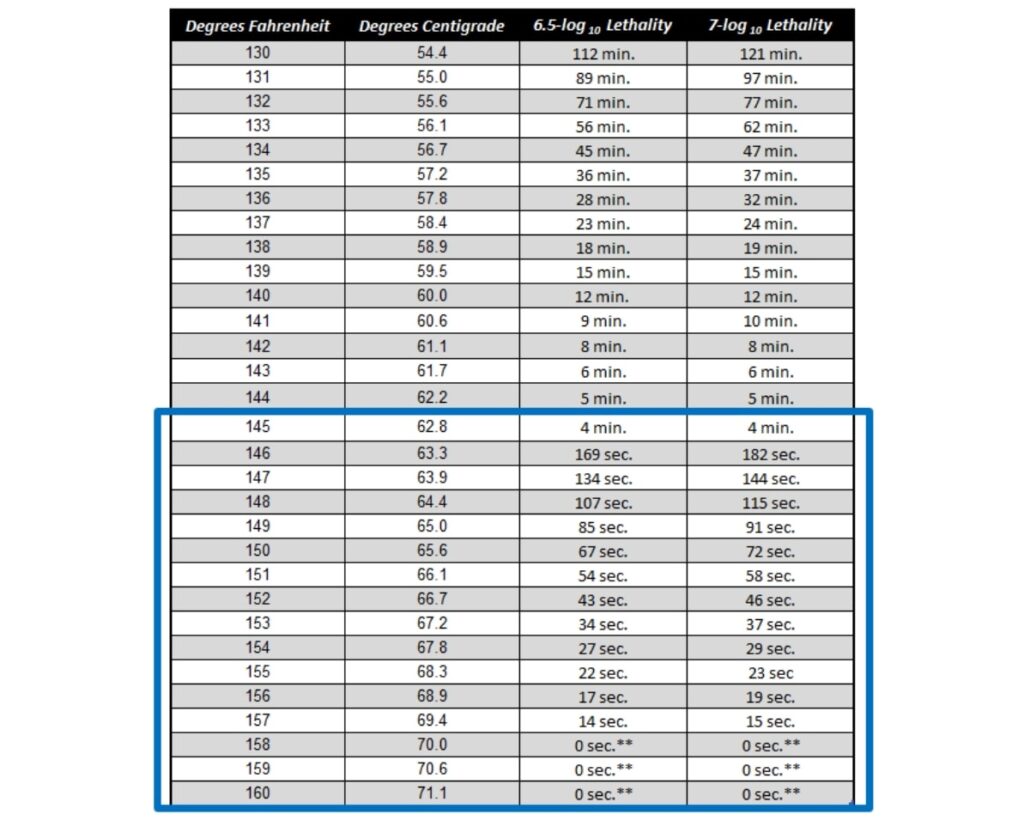
The upshot is: Food safety is a function of both temperature and time.
High-heat Processing after Sous vide
High-temperature searing or roasting after sous vide cooking serves a dual purpose. Besides enhancing flavor and creating a desirable crust, it adds an extra layer of food safety by killing potential surface bacteria that may have survived the sous vide process. This step is particularly effective for whole cuts of meat, where the center is almost sterile [3], and bacteria are typically on the surface. Any potential surface bacteria that may have survived the sous vide process will be killed by high-heat searing. However, this step should be short to preserve the texture and flavor benefits of sous vide, providing a perfect blend of culinary delight and food safety.
Extra Guidelines to Enhance Food Safety
- Use sous vide equipment with precise temperature control and adequate heating capacity, which are key for achieving the best results and ensuring food safety.
- All sous vide equipment must be regularly and thoroughly cleaned and sanitized.
- Use appropriate food-grade bags in sous vide cooking, as vacuum-sealed bags could leak if exposed to heat for an extended period.
- Obtain your food from reliable sources of high quality.
- Ensure your food is fully immersed in water and not overcrowded.
- Refridge your food if you don’t consume it immediately.
Conclusion
Sous vide cooking, a modern culinary technique, has become increasingly popular for its ability to deliver consistent, restaurant-quality results right from home kitchens. The precision in temperature control and extended cooking times aid in effective pasteurization, eliminating potential foodborne pathogens. Additional safety is provided by high-heat searing post sous vide, killing any potential surface bacteria, especially in whole cuts of meat.
Further safety measures include using equipment with precise temperature control, regular cleaning and sanitizing, using appropriate food-grade bags, sourcing food from reliable sources, ensuring full food immersion in water, and proper food storage. In essence, sous vide is a culinary technique that marries taste excellence with food safety.
Reference
[1] FSIS Cooking Guideline for Meat and Poultry Products (Revised Appendix A) December, 2021. https://www.fsis.usda.gov/sites/default/files/media_file/2021-12/Appendix-A.pdf
[2] https://www.govinfo.gov/content/pkg/CFR-2020-title9-vol2/pdf/CFR-2020-title9-vol2-sec318-23.pdf
[3] Kiprotich, S. S., & Aldrich, C. G. (2022). A review of food additives to control the proliferation and transmission of pathogenic microorganisms with emphasis on applications to raw meat-based diets for companion animals. Frontiers in Veterinary Science, 9, 1049731.

